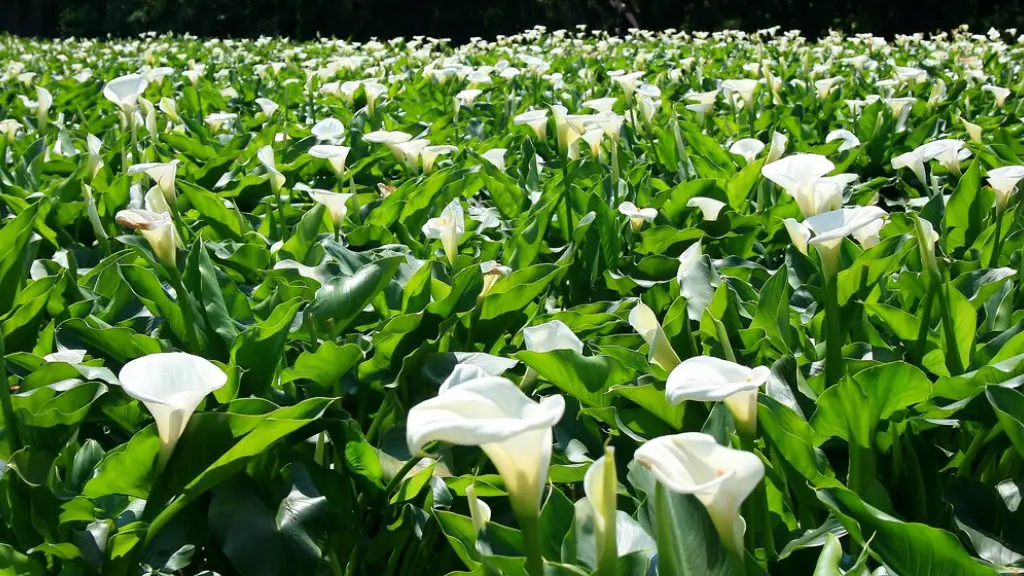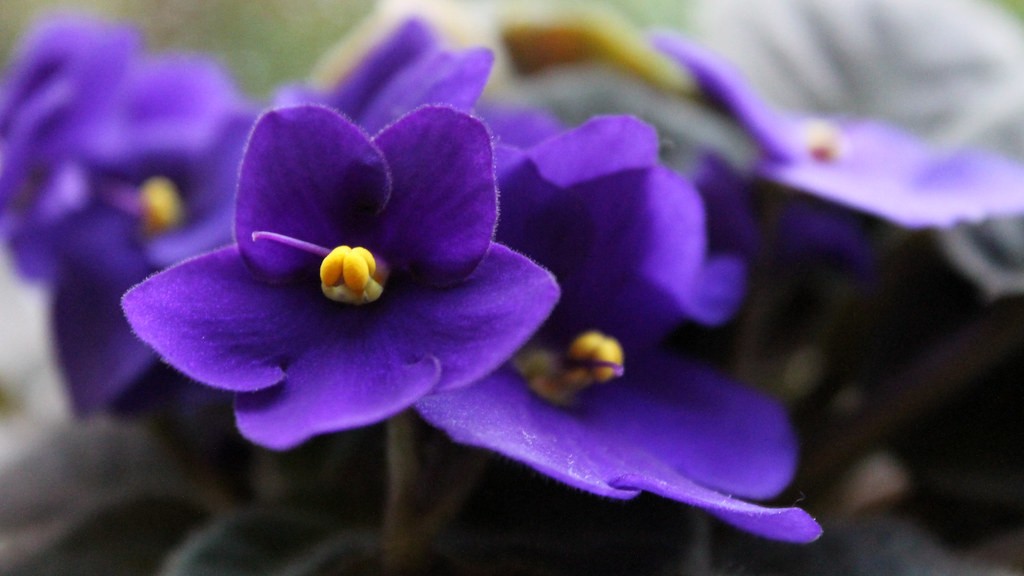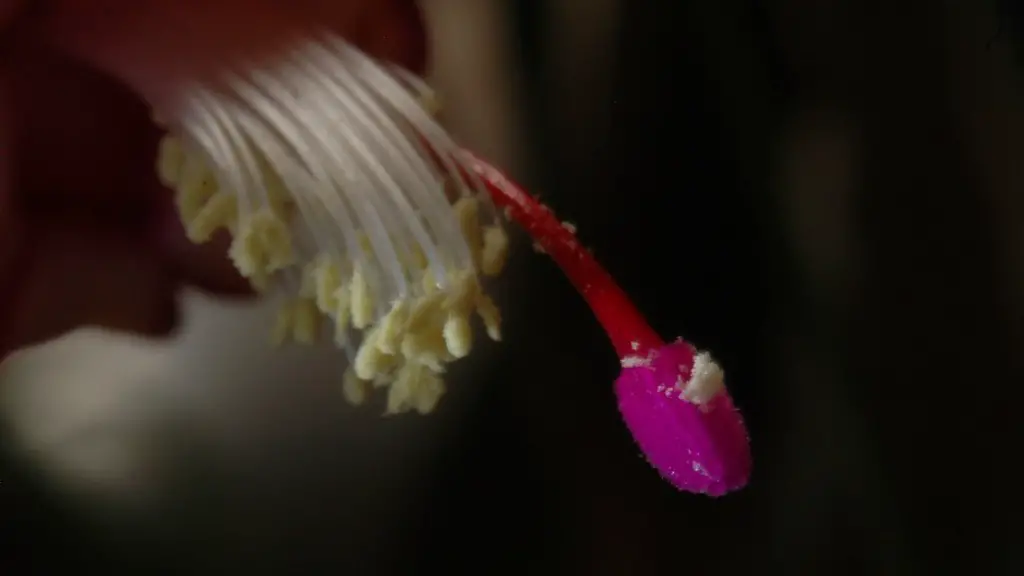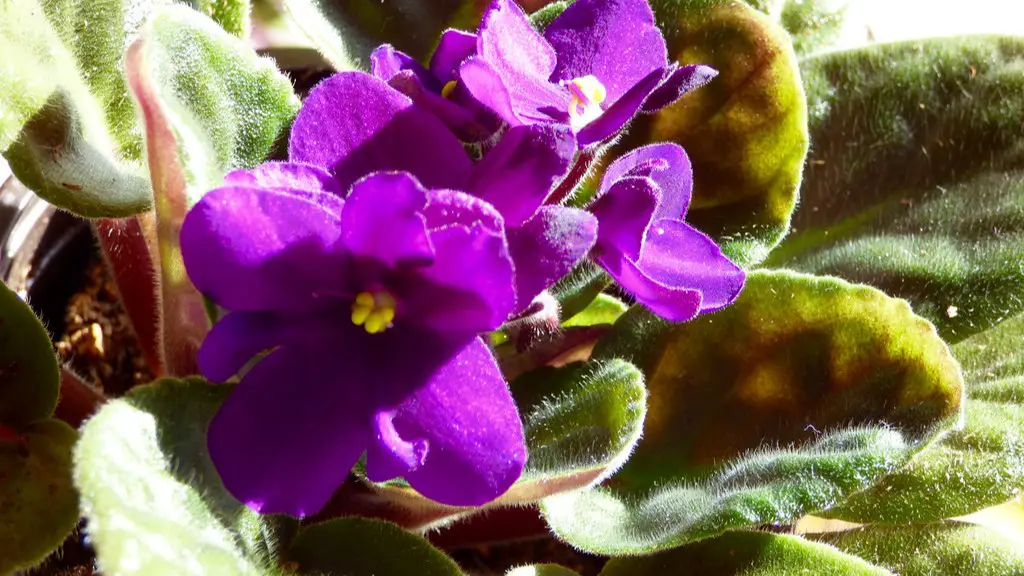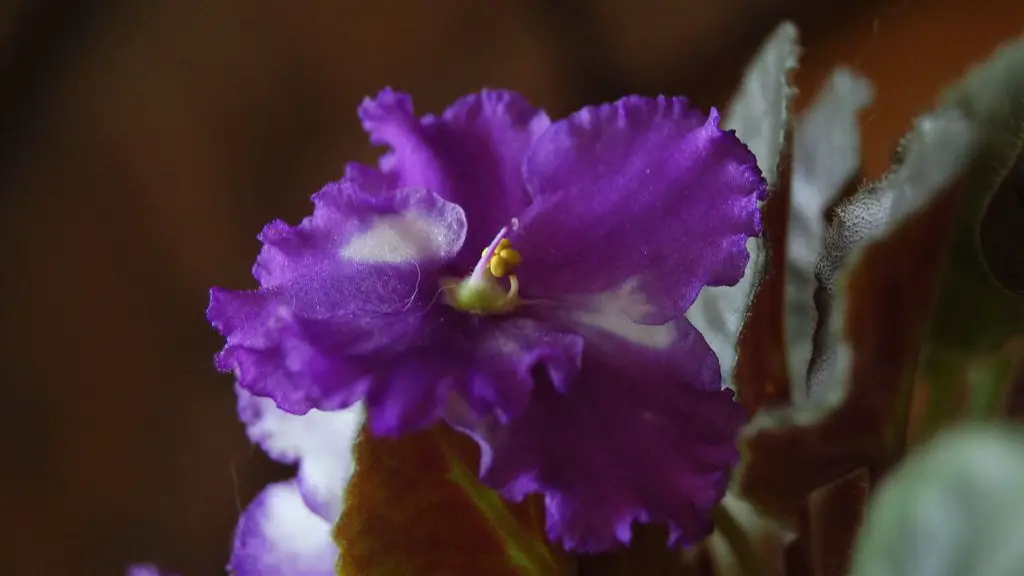One of the most popular flowers in the world, the calla lily is a beautiful, container-grown plant that is easy to care for. With large, showy blooms, the calla lily is a great way to add color and beauty to your home. Here are some tips on how to care for your calla lily houseplant:
• watering: Calla lilies need to be kept moist, but not wet. They should be watered about once a week, and fertilized every other week.
• light: Calla lilies prefer bright, indirect light. If you live in a dark apartment, you may need to supplement with grow lights.
• temperature: Calla lilies like it on the cool side, so keep them away from heat sources like radiators or fireplaces.
• soil: Calla lilies need well-draining soil. If your pot doesn’t have drainage holes, be sure to water very carefully so that you don’t drown the roots.
• repotting: Calla lilies should be repotted every year or two, in early spring. Use a pot that is just big enough to accommodate the roots, and add fresh potting mix.
To care for a calla lily houseplant, water it when the soil is dry, fertilize it once a month, and place it in a bright, indirect light.
How do you care for potted calla lilies indoors?
To ensure that your calla lilies remain healthy, it is important to keep their roots moist at all times. This means watering them regularly and draining any excess water from the pot or container in which they are growing. During the winter months, when the plants are not actively growing, you can reduce the frequency of watering.
The Calla Lily is a beautiful plant that can thrive indoors if the proper growing conditions are met. These plants need bright, indirect sunlight and well-drained, moist soil. Keep an eye on the soil moisture levels and water when necessary. Calla Lilies also benefit from regular fertilization. With proper care, these lovely plants can add a touch of elegance to any indoor space.
How often should you water an indoor calla lily
Calla lilies are beautiful, elegant flowers that make a great addition to any garden. However, it’s important not to over-water them, especially when you first plant them. Once the rhizomes are established, you can water the plants once a week, or more frequently if conditions are hot or dry.
Calla lilies are beautiful flowers that can brighten up any home. They prefer some sunshine, but be careful to avoid the hot midday sun as this can burn the leaves. An eastern window with morning sun or a western window with afternoon sun will be ideal for this plant. Calla lilies inside prefer temperatures between 65 degrees F.
How long will calla lily last indoors?
Cutting gardens are a great way to enjoy beautiful flowers indoors. Calla lilies are especially well-suited for cutting, as they are easy to arrange and can last for up to two weeks in a vase. If you’re looking for a stunning cut flower to enjoy indoors, look no further than the calla lily!
The calla lily is a beautiful flower that thrives in moist soil. However, oversaturation of the soil can cause the stems to become limp and the roots to rot. Causative factors include excessive rainfall, poor drainage, and overwatering. If you find your lilies sitting in puddles or with mushrooms growing beside them, it’s likely that the soil is compacted and draining poorly.
How do you winterize indoor calla lilies?
Calla lilies are a beautiful addition to any garden, and proper care is essential to keeping them looking their best year after year. After the bloom season is over, allow the rhizomes to dry out completely before storing them in a cool, dry place. Paper bags or wrapping in newspaper will help to keep them from drying out too quickly. Check on them periodically throughout the winter to make sure they are continuing to stay dry and cool. With a little care, your calla lilies will be back to brighten up your garden for many years to come.
Calla lilies are beautiful flowers that can brighten up any space. They grow best in full sun to part shade, and in containers, it is recommended that they be placed in a location where they can receive about six hours of sunlight each day. The ideal temperatures for container grown calla lilies are daytime temperatures between 60 and 75 degrees F.
Do indoor calla lilies go dormant
After calla lilies bloom, they will go dormant. This is necessary for them to be able to bloom again. If you are growing them as houseplants, you should stop watering them during this time and place them in a cool location. After they have gone dormant, you can start watering them again.
If you want your calla lily plant to bloom, follow these steps. First, place it in a cool (not cold) dark place for two months. Next, bring it back out into the light and resume watering it. The foliage will regrow and your calla lily plant will start to bloom shortly thereafter.
Do calla lilies need misting?
🔸Ideal room humidity for a Calla Lily is between 40-50%
🔸Misting the flowers will cause botrytis petal blight
🔸Too high humidity can result in powdery mildew
🔸Good air circulation is important
If you want to keep your calla lily plants healthy, make sure their roots don’t stay soaked in water for too long. Too much moisture can cause the roots to start rotting, and the plant can contract other diseases. This will cause the leaves to wither.
Why is my indoor calla lily not flowering
If you’re having trouble getting your calla lilies to bloom, there are a few potential causes. One is that there’s too much nitrogen in the soil. Another is that the plant isn’t getting enough moisture. Another possibility is that the plant is in too much shade. And finally, inadequate dormancy periods can also prevent calla lilies from blooming. If the plant doesn’t have enough time to rest, it won’t have enough energy to bloom.
If you notice that the leaf tips of your calla lily are turning brown, it is likely that you are watering it too much. Brown leaf tips may also be a signal that you are using too much fertilizer. To correct this, reduce the amount of water and fertilizer that you are using.
Should I cut back my indoor calla lilies?
Calla lilies don’t require regular pruning, but you should remove the wilted flowers as they die. Removing parts of the plant shouldn’t kill it, but be sure to wear gloves while doing this to avoid contact with the irritating sap.
Calla lilies are best transplanted in the spring, after all danger of frost has passed and the soil is beginning to warm. Choose a location with organically rich soil that holds moisture well. Callas grow well in low, moist areas where most other rhizomes would suffer from root rot.
How long can calla lilies go without water
Hand-tied calla lily bouquets are beautiful and can last a long time out of water, as long as the ends are sealed.
If you notice your calla lily or other plant dripping sap, it’s likely a sign that you’re watering it too much. When roots are saturated, they put pressure on the rest of the plant which causes it to release moisture (and nutrients) in the form of sap. To stop the dripping, cut back on watering and your plant should return to normal.
Final Words
To care for a calla lily houseplant, water it regularly and fertilize it monthly. Place it in a bright location, but out of direct sunlight. Allow the top inch of soil to dry out before watering. In the winter, water it less frequently.
If you’re looking for a striking, elegant houseplant, the calla lily (Zantedeschia aethiopica) is a great choice. These beautiful plants are relatively easy to care for, as long as you keep a few key points in mind. Place your calla lily in a bright spot out of direct sunlight, and water it regularly, letting the soil dry out slightly between waterings. Be sure to use a well-draining pot, as calla lilies are susceptible to root rot. With a little care, your calla lily will thrive and bring a touch of beauty to your home.
